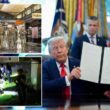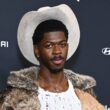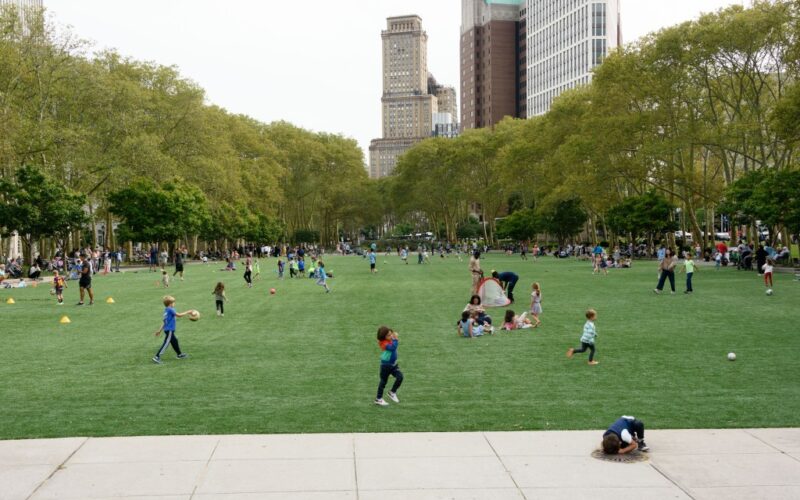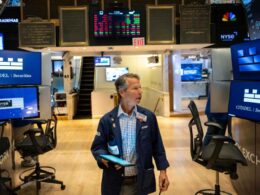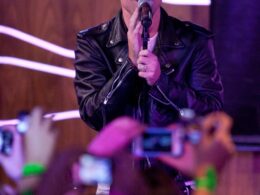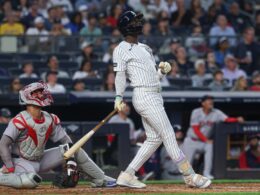Summer is here. The days are bright, and the evenings are long. And amateur athletes of all shapes and sizes have been heading to city parks to play on baseball diamonds and soccer fields in all five boroughs.
Unfortunately, if the Parks Department has its way, more and more New Yorkers will be hitting, fielding, sliding, and kicking not on natural grass, but on problem-plagued, chemical-laden artificial turf. Specifically, the department is planning to convert dozens of sports fields to plastic-based synthetic “grass,” having already uprooted more than 200 natural grass fields in recent years.
We understand the Parks Department’s motivation. They prefer to have fields they hope would require less maintenance and that can tolerate high levels of use common at popular city park locations.
But gambling on artificial turf is a losing bet for city residents. Here’s why:
There’s nothing natural about synthetic turf. These fields are composed of a crumb-rubber cushion fill usually made from recycled tires, an upper layer of petroleum-based plastic “carpet,” and a variety of toxic, synthetic chemical compounds. Synthetic turf fields pose multiple risks to children’s health.
First, there’s the heat. Artificial turf is a heat multiplier. On hot summer days, the sun’s radiation bouncing off of synthetic turf can hit temperatures of 130 to 140 degrees three to four feet above the plastic surface. Sizzling temperatures like that can lead to heat stress, dehydration, and skin burns.
Then there’s the issue of exposure to toxic substances. Chemical compounds like styrene and 1,3 butadiene are major components of the crumb rubber that is a prime constituent of synthetic turf. Crumb rubber pellets can also contain lead, cadmium and other toxic metals. These poisons can vaporize on hot days and be inhaled, absorbed through the skin, or even swallowed by children playing on synthetic fields.
While the medical evidence against synthetic turf is still emerging, we already know enough to be concerned. And where there is scientific uncertainty on an issue of potential human health dangers, officials should err on the side of caution.
The burden of proof should be on the industry seeking to introduce their product into commerce. And the petrochemical manufacturers of artificial turf have not proven the safety of their product, especially for children.
Artificial turf is also bad for the environment. The chemical compounds in synthetic turf can run off into local waterways after heavy rains. And every eight to 10 years or so when a turf field reaches the end of its useful life, there’s the expensive challenge of tearing it up and figuring out what to do with tens of thousands of pounds of toxic-laden crumb rubber that must be safely disposed of at every single field.
Contrary to manufacturers’ claims, these fields aren’t cheap. And disposing of and replacing artificial turf every decade is one big, hidden expense. The Parks Department nevertheless seems willing to leave all such environmental and economic burdens for another team of officials to deal with.
But some cities and towns across the country are waking up to the dangers. In 2022, Boston became the largest city in the nation to effectively end the installation of artificial turf in its city parks.
Fortunately, legislation pending in the New York City Council would trim the problem here in America’s most populous city. Introduced by Councilmember Christopher Marte, the proposal — Intro 1202 — would ban the future installation of artificial grass in New York City parks. The bill’s City Council sponsors recognize that there’s a readily available substitute for synthetic turf — natural grass. It’s time-tested. It keeps its cool. And it’s resilient.
Sure, live grass needs active maintenance, especially in heavily used city parks. But the solution to that challenge is to boost Parks Department staffing, as Council Parks Committee Chair Shekar Krishnan has long proposed. This will provide jobs for city residents. And in any event, it makes more sense to have city kids playing on even dusty, ragged ball fields than to expose them to the health and environmental risks posed by synthetic turf.
In short, switching out natural grass for synthetic turf on the city’s beloved playing fields would be like trading Aaron Judge to the Los Angeles Dodgers.
With the City Council’s help, we can keep natural grass on our baseball diamonds and soccer fields. And when that happens, all New Yorkers will be winners.
Landrigan is a pediatrician, public health physician, and director of the Global Public Health Program at Boston College. Goldstein is a senior attorney and NYC environment director at the Natural Resources Defense Council (NRDC).
